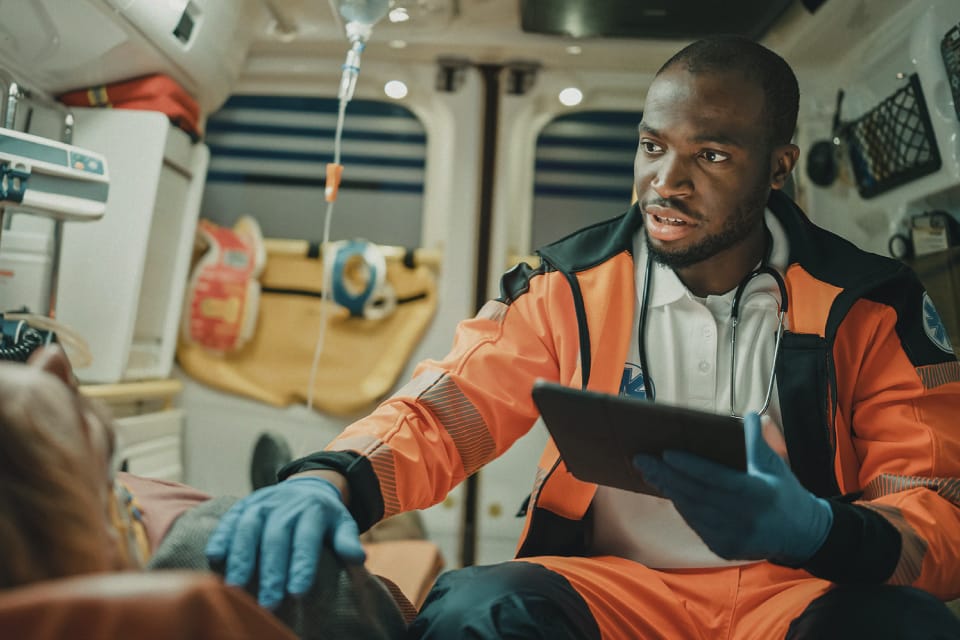
The Recordable Injury: Criteria and Best Practices

The “recordable injury” concept is critical in occupational safety, as industry professionals use it as a standard against which to evaluate workplace safety and regulatory compliance.
However, not all companies know all the events that qualify as a recordable injury or why it’s essential that hiring clients and contractors alike comprehend and document these occurrences precisely.
This article discusses the term’s definition, criteria, and best practices.
What is a Recordable Injury?
A recordable injury refers to certain types of work-related injuries or illnesses companies must report according to specific criteria set by applicable occupational health and safety regulations. In the United States, for example, these regulations are primarily enforced by the Occupational Safety and Health Administration (OSHA).
What Qualifies as a Recordable Injury?
The criteria for recordable injuries can vary across different countries and regulatory bodies, but they generally include the following:
It Requires Medical Treatment Beyond First Aid
OSHA considers any injury that requires more than basic first aid a recordable injury. In other words, minor treatments such as cleaning, bandaging minor wounds, or administering over-the-counter medications at non-prescription strength do not qualify.
It Results in Time Away from Work
Recordable injuries include those that cause the employee to leave work beyond the day of the injury and those in which the employee cannot carry out their regular responsibilities due to the injury.
It Restricts Work or Results in a Job Transfer
An injury is considered recordable if it results in a job transfer or restricted duty orders. Possible restrictions include limiting the work or time an employee can devote to specific duties.
It Results in the Worker’s Loss of Consciousness.
Any work-related incident leading to loss of consciousness is recordable.
It Results in Worker Death
All work-related fatalities are immediately recordable.
10 Recordable Injury Best Practices
Recordable injury best practices are crucial for fostering a safe, healthy, and productive work environment, as these practices help companies follow regulatory requirements and contribute to the overall well-being of the workforce.
Ten best practices are as follows:
- Provide regular safety education. Supplying ongoing safety education to all employees is critical to fostering a safer job site. The program should cover the risks associated with their job roles, safe work practices, and procedures for reporting hazards or incidents.
- Report injuries accurately and timely: Management should ensure that all recordable injuries are reported accurately and timely, per the guidelines set by relevant health and safety authorities.
- Conduct a thorough investigation: Companies should comprehensively investigate the reported injuries to determine the cause, circumstances, and potential preventive measures.
- Include employees in the discussion. Management should involve employees in safety discussions involving recent incidents. Their firsthand experience and insights can be invaluable in finding risks and developing effective safety solutions.
- Implement preventive measures: Based on the findings from those incident investigations and employee feedback, companies should implement preventive measures to mitigate similar risks in the future.
- Review and update safety policies. Safety teams should regularly review and update its policies and procedures to reflect current best practices, technological advancements, and regulation changes.
- Conduct emergency preparedness and response training: Management should ensure that employees are trained in emergency response procedures, helping them deal with incidents more effectively and minimize the impact of injuries when they occur.
- Perform external audits. Companies should consider external audits and consultations for an unbiased review of their safety practices. External experts can supply new perspectives and recommendations for improvements.
- Develop wellness and health programs: Employees appreciate feeling valued and protected, and employers can build better relationships with their workers by creating wellness and health programs that address the overall well-being of employees.
- Leverage safety technology: Companies should implement safety technology and tools for better monitoring, reporting, and analyzing safety-related data, helping track trends, identify risk areas, and improve overall safety management.
Understanding Recordable Injuries is Essential for Workplace Safety
Understanding what constitutes a recordable injury is crucial for maintaining a safe and compliant workplace. It’s not just about following regulations; it’s about fostering a culture that values employee well-being and safety. By recognizing the importance of accurate injury recording and taking proactive steps to prevent workplace accidents, businesses can create a safer, more productive environment for all employees.
However, while understanding when to record an injury helps prevent future incidents, stopping the first one from happening is even more paramount. To do this, you need the industry’s premier safety technology that allows your safety teams to prepare for and avoid hazards on the worksite. Consider partnering with us to design a solution that meets your safety needs.
Contact us today to learn more.




